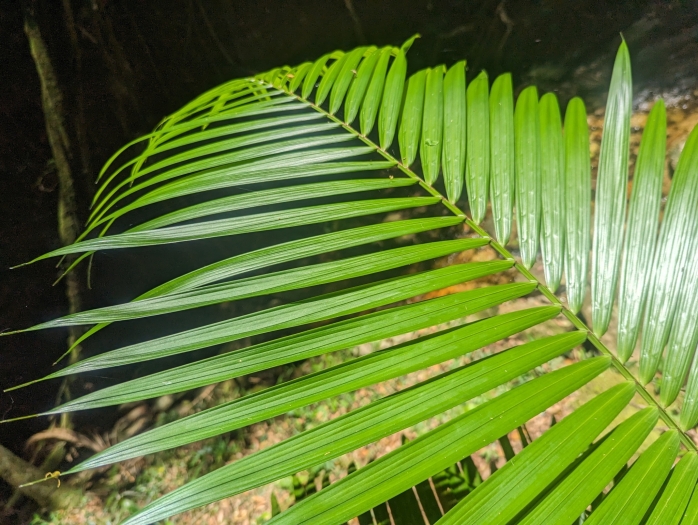Juçara
(Euterpe edulis)
Juçara (Euterpe edulis)
/
/

© Alan Rockefeller
CC BY 4.0
Image By:
© Alan Rockefeller
Recorded By:
Copyright:
CC BY 4.0
Copyright Notice:
Photo by: © Alan Rockefeller | License Type: CC BY 4.0 | License URL: http://creativecommons.org/licenses/by/4.0/ | Uploader: alan_rockefeller | Publisher: iNaturalist |

























Estimated Native Range
Summary
Euterpe edulis, commonly known as juçara, jussara, açaí-do-sul, or palmiteiro, is a palm species native to the Atlantic Forest biome in Brazil, particularly thriving in the dense, moist, and shaded understory of lowland tropical rainforests and montane forests. It is adapted to a humid climate with consistent rainfall, often found at elevations up to 3937 feet (1200 meters). This palm typically reaches a height of 33-66 feet (10-20 meters) with a slender, smooth, gray trunk and a crown of pinnate leaves that can be quite striking in the forest canopy.
Euterpe edulis is valued for its ornamental beauty and is used in tropical and subtropical landscapes. It is also renowned for its edible palm hearts, which are considered a delicacy. However, due to overharvesting for this purpose, it has become rare in the wild and is no longer commercially harvested to protect the remaining populations. In cultivation, it requires a moist, well-drained soil and can tolerate a range of light conditions from partial shade to full sun. It is important to provide regular waterings to mimic its natural rainforest habitat. While it is not typically prone to diseases, root rot can occur if the soil is not well-drained. The palm is also a host plant for the larvae of the butterfly Caligo brasiliensis, which can be a point of interest for butterfly enthusiasts.CC BY-SA 4.0
Euterpe edulis is valued for its ornamental beauty and is used in tropical and subtropical landscapes. It is also renowned for its edible palm hearts, which are considered a delicacy. However, due to overharvesting for this purpose, it has become rare in the wild and is no longer commercially harvested to protect the remaining populations. In cultivation, it requires a moist, well-drained soil and can tolerate a range of light conditions from partial shade to full sun. It is important to provide regular waterings to mimic its natural rainforest habitat. While it is not typically prone to diseases, root rot can occur if the soil is not well-drained. The palm is also a host plant for the larvae of the butterfly Caligo brasiliensis, which can be a point of interest for butterfly enthusiasts.CC BY-SA 4.0
Plant Description
- Plant Type: Tree
- Height: 20-50 feet
- Width: 8-10 feet
- Growth Rate: Moderate
- Flower Color: Cream
- Flowering Season: Summer
- Leaf Retention: Evergreen
Growth Requirements
- Sun: Full Sun, Part Shade
- Water: High
- Drainage: Medium, Fast
Common Uses
Edible*Disclaimer: Easyscape's listed plant edibility is for informational use. Always verify the safety and proper identification of any plant before consumption., Potted Plant
Natural Habitat
Native to the dense, moist, and shaded understory of lowland tropical rainforests and montane forests within the Atlantic Forest biome in Brazil
Other Names
Common Names: Heart Palm, Acai Palm, Ensarova, Içara, Jicara, Juçara, Palmiteiro, Jussara Palm
Scientific Names: , Euterpe edulis, Euterpe edulis var. clausa, Euterpe egusquizae, Euterpe egusquizae, Euterpe espiritosantensis,
GBIF Accepted Name: